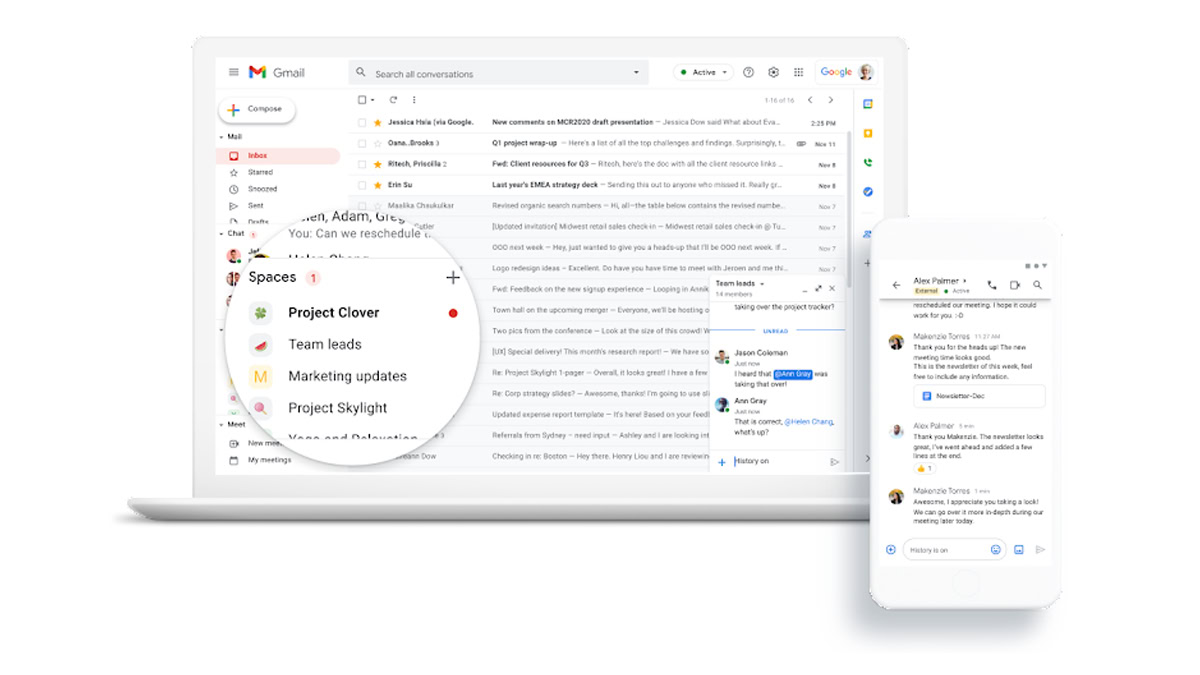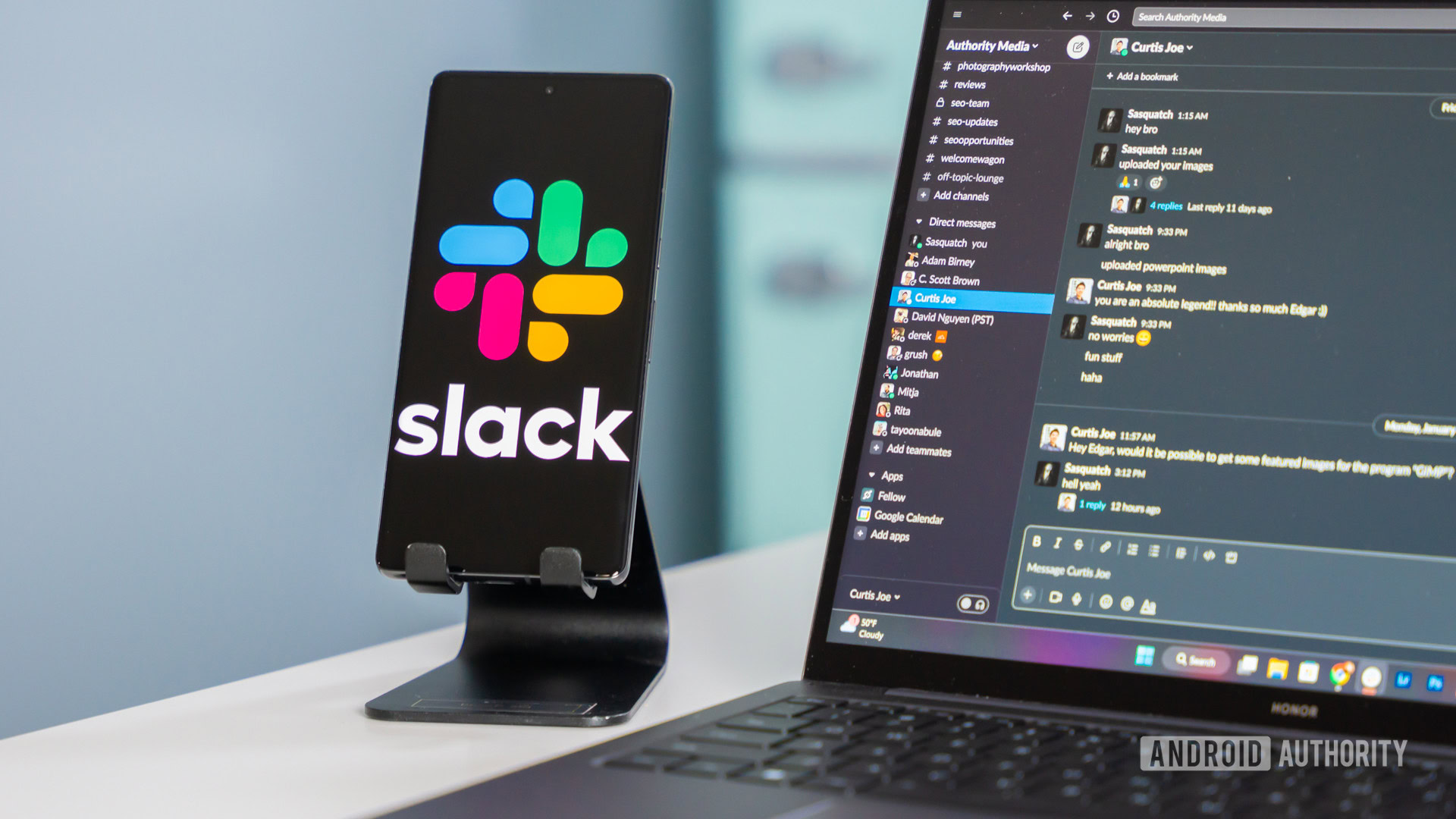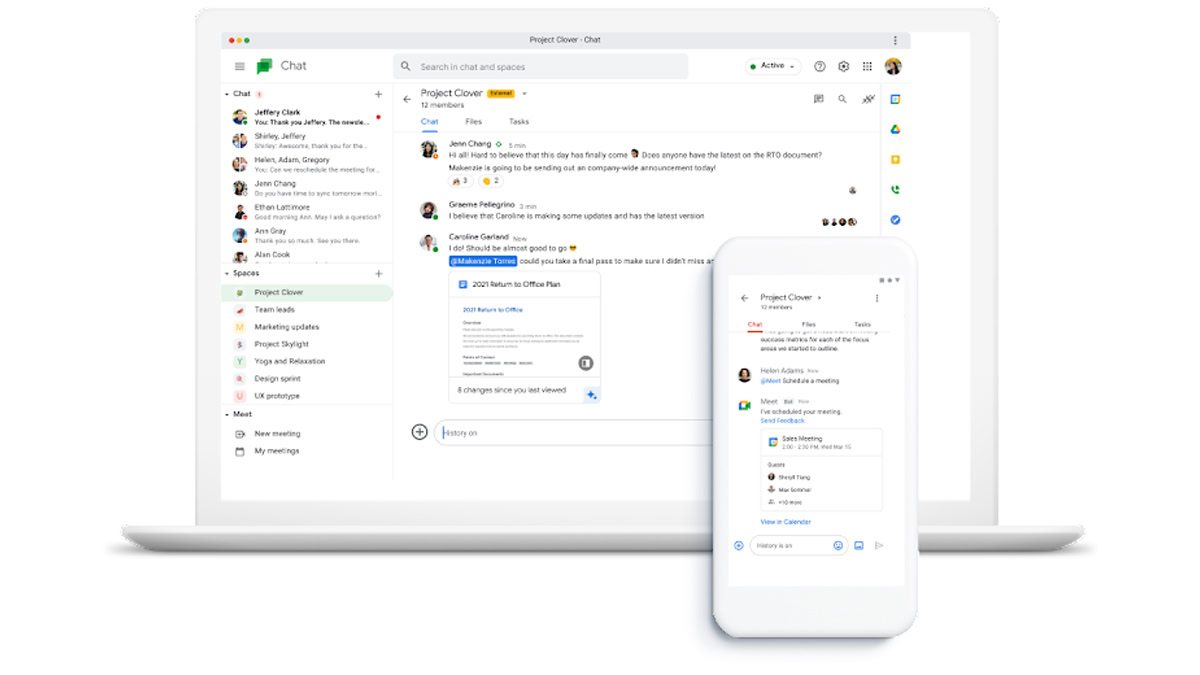Affiliate links on Android Authority may earn us a commission. Learn more.
What is Google Chat, and how do you use it?
While Google has a collection of messaging options such as Google Duo and and of course Google Messages, one you’re probably less familiar with is Google Chat. In this guide, we’ll cover the essentials of what it is and how to use it.
JUMP TO KEY SECTIONS
What is Google Chat, and how does it work?

Google Chat is one of the official successors to Hangouts, the company’s once-popular messaging service that sunsetted in November 2022. The other successor is Google Meet, which handles video conferencing. Chat is available on the web as well as via Android and iPhone/iPad apps. Relatively new is a standalone desktop app, but it’s not a necessary download.
On the surface Chat is a straightforward text-based app similar to any other. You message other Chat users individually or in group chats, including drop-in conversations known as Spaces. The service is targeted primarily at businesses and other organizations, so Spaces are decidedly more elaborate, offering features like dedicated Files and Tasks tabs, plus integration with other Google services such as Meet, Docs, Sheets, and Drive. It also has hooks for bots and third-party apps like Jira and Salesforce.
Chat was originally available only via Google Workspace, but access was opened to the general public in April 2021. You can’t send SMS or MMS texts through the service, and voice calls are directed through Google Voice. Likewise, video calls are pushed to services like Meet.
Google Chat features
One of its core principles is accessibility. If you’re signed up for Chat you can reach it via the web version of Gmail, so you’ll be kept up to speed even as you’re sifting through email exchanges. When you need to participate in Chat, you can switch to the standalone web/desktop app or the Android and iPhone/iPad clients.
Though you can always message people individually, Spaces form of the core of Chat. These are dedicated chatrooms where people are free to come and go, each being custom-named for a particular team or topic, such as “General,” “Content Pitches,” or “Fitness Club.”
Each Space has its own Files and Tasks tabs, making it easier for teams to collaborate. You can additionally collaborate inside of Google Docs, Sheets, and Slides, but Workspace managers can make use of bots and third-party apps if they need more functionality.
In that sense Chat is a direct competitor with Slack, which is probably the most popular business-oriented messaging service. Other parallel features include support for reactions, threaded conversations, and broad search functions.
How does Google Chat compare to other messaging apps?

As we mentioned a moment ago, the closest comparison is probably Slack, but by extension there are similarities with Microsoft Teams, which is itself a Slack challenger. A key difference with Teams and Slack is that they have integrated audio and video options, whereas Chat forces you to switch to something like Meet or Voice. That’s not necessarily a bad thing — it keeps Chat focused.
If you’re not invited to use Chat by an employer, there’s no particular reason to use it over something like Google Messages, WhatsApp, or Facebook Messenger. In fact those apps include consumer-oriented features that Chat doesn’t, such as Messenger’s real-time location sharing.
How to use Google Chat
If you’re not a Google Workspace customer, you can start using Google Chat for free (with a Google account) by visiting chat.google.com/download/. This offers links to the web/desktop app as well as the Android and iPhone/iPad clients. Businesses will likely need to buy into the Google Workspace ecosystem first, at which point they can invite employees into Chat.
In the web app, which can also be accessed via Gmail, you’ll see a sidebar on the left and a conversation pane on the right. The sidebar is divided into Chat, Spaces, and Meet sections. We won’t cover Meet here, since that can function independently.
Chat
This is dedicated mostly to one-on-one conversations, though you can also bring in others by selecting a conversation and clicking the Add people button. If you’re a former Hangouts user, this is where your old conversations have migrated to.
When a conversation is selected, there are a variety of options. At the top of the screen you’ll find options to search Chat, start a video call, or change your status in the app. The default status options are Automatic, Do not disturb, and Away, but you can also write a custom status message and manage notification settings.
New messages are sent by typing into the field at the bottom and hitting Enter or Send Message. If you like, though, there are icons for changing text formatting, uploading files, setting up a video meeting, or inserting emojis or GIFs.
Clicking the plus icon brings up Workspace-related options, such as Drive files or Calendar invites.
If you hover over a message you’ll see options like Add reaction, Quote in reply, and Mark as unread. Additional options can be found by clicking the More (triple-dot) icon, including adding something to Tasks or forwarding to your Gmail inbox.
Spaces

If you’re part of a Workspace, this section will probably already be populated, but otherwise you can click on the plus icon, which will display options to create or browse Spaces as well as invite other people. You can start a Space with as little as one other person from your Google Contacts, but you’ll see a list of frequent contacts for easy access.
Once a Space is active, click it to see what’s going on. Conversations here are similar to the exchanges in regular Chat, except they’re perpetual, meaning that people can drop in and out at will. In a Workspace setting you’ll probably also be making regular use of the Files and Tasks tabs, the latter for assigning people to specific projects.
Some links, files, apps, and/or bots will trigger thumbnails and other pop-up info. All of these will vary based on the particular Space/Workspace you’re in.
Spaces are also where you’ll see features like side-by-side conversation and document views for easier collaboration. Note that there’s a much, much higher limit on the number of people who can get involved in a Space. Whereas a regular Chat conversation is limited to “only” 400 people (under Google Workspace), a Space can handle as many as 8,000. You’ll probably never see that in reality, since it would be utter chaos unless only a handful of people were allowed to speak.
FAQs
It should be. It’s subject to the same encryption protections as anything else from Google, and you can control or delete data via My Activity. Unlike some Google services, Chat content isn’t used for advertising.
For basic individual purposes yes, but businesses and similar organizations will eventually need to pay for a Google Workspace plan.
Yes, so it’s important to be skeptical if someone you don’t know well invites you to a conversation, especially if they immediately share a link or talk about sending money. Google’s software will try to flag links to fraudulent sites, but there’s always the chance one could slip through the cracks.
Yes, including both in-transit and static data.
Not directly. There are options to start video calls and meetings, but these kick you over to other Google services like Meet.